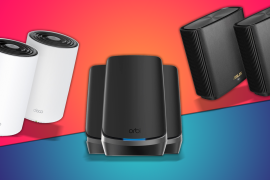Best budget tablets in 2025 for outstanding value
If you're looking for the ultimate iPad alternatives out there, check out Stuff's guide to the best budget tablets
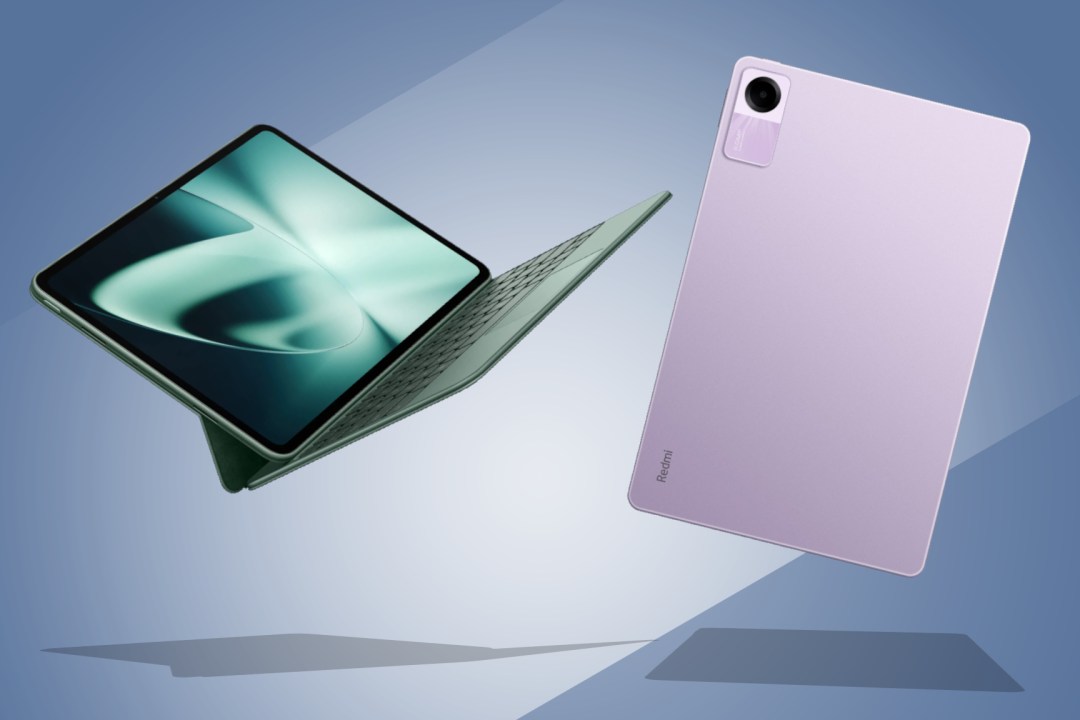
Tablets have become an essential gadget for many, blending the convenience of a smartphone with the functionality of a laptop. But not everyone wants to spend a fortune on a high-end device – and thankfully, you don’t have to. The best budget tablets today offer impressive performance, vibrant displays, and versatile features at a fraction of the cost. Whether you’re after a device for streaming, casual gaming, reading, or light productivity, there’s a budget-friendly tablet that fits the bill.
In the early days of tablets, affordability often meant significant compromises: sluggish performance, poor build quality, and limited app options. But times have changed. With advancements in hardware and software optimisation, even entry-level models now deliver a surprisingly smooth experience. From streaming movies and joining video calls to taking notes or letting the kids explore educational apps, these tablets can handle a variety of tasks with ease.
So, what should you look for in a budget tablet? A sharp, responsive screen, reliable battery life, and decent processing power are key. Some models even come with stylus support and optional keyboard accessories, blurring the line between tablet and laptop.
In this group test, we’re setting our sights on the mid-market: no iPad Pros here, just a broad selection of affordable Android-based machines. So which is the right tab for you?
Why you can trust Stuff: Our team of experts rigorously test each product and provide honest, unbiased reviews to help you make informed decisions. For more details, read how we test and rate products.
Quick list: What’s the best budget tablet?
The Amazon Fire Max 11 (buy now) is an Amazon-centric but gifted tab at a very affordable price.
The OnePlus Pad (buy now) is classy stuff – a premium tablet at a mid-range price from OnePlus.
The Samsung Galaxy Tab S9 FE (buy now) is a very strong package, even if we prefer the performance of the OnePlus.
The Lenovo Tab P12 (buy now) is a larger model. It is solid and feels primed for PC-style productivity.
The Redmi Pad SE (buy now) is a budget tablet that’s refreshingly low on compromise.
The Honor Pad X9 (buy now) is an impressively slick cut-price slate with a stunning 120Hz display.
The TCL Nxtpaper 11 (buy now) is ideal if you read a lot of e-books or want a colour tablet for sketching and note-taking.
The Huawei MatePad 11.5in PaperMatte Edition (buy now) has great hardware, but it’s let down by Huawei’s lack of Google services and apps.
The Nokia T10 (buy now) is small, low-powered and laggy, but this one’s temptingly affordable.
The best budget tablets you can buy today:
Best budget tablet overall
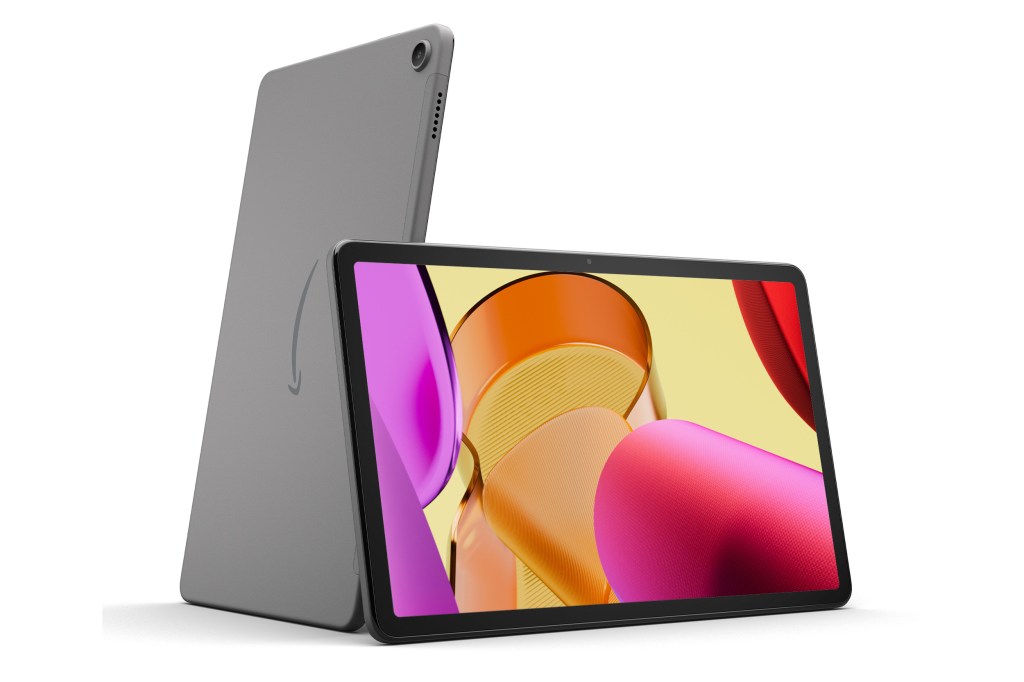
1. Amazon Fire Max 11
Stuff Verdict
An Amazon-centric but gifted tab at a very affordable price
Pros
- Great, solid design
- Excellent screen and speakers
Cons
- Requires tinkering to get Play Store apps
- Ad-supported version is annoying
| Amazon Fire Max 11 specs | |
|---|---|
| Screen | 11in 2000×1200 |
| Storage | 64/128GB + microSD |
| Camera | 8MP front, 8MP back |
| Connectivity | USB-C, Wi-Fi 6, Bluetooth 5.3 |
| Dimensions | 259x164x7.5mm, 490g |
As the name suggests, the Fire Max 11 is the most powerful tablet in Amazon’s Fire range, built around an 11in 1200p screen, 4GB of RAM, an octa-core processor and Wi-Fi 6 connectivity. And while it doesn’t come with any as standard, the Max 11 supports a host of premium accessories including a keyboard, a stylus and even a game controller.
Like the other tablets here it runs on Android, but Amazon has slathered its own UI over the top like a slab of restrictive butter: users must download from Amazon’s own app store rather than Google Play. On the upside, there’s close integration with Amazon services like Kindle, Audible and Prime Video, not to mention Alexa.
Is it any good?
The unibody is slim, light and tough, as well as rather elegant… except perhaps for the Amazon logo on the back. I have no complaints about the touchscreen either: it’s rich and bright, with vivid colours and sharp 213ppi pixel density.
Paired with the decent speakers up top, that makes this a fine slate for streaming HD video and playing games (and the 4GB of RAM and octa-core processor kept things ticking along nicely in my test games of PUBG Mobile). Battery life is good too: you could spend all day on YouTube and still have plenty in the tank.
The experience isn’t all roses and kittens, mind you. There are ads that pop up every time you unlock it (unless you buy a slightly pricier version), and you always feel like Amazon is pushing you towards its own content. The app selection is also weaker than on a standard Android slate.
Best budget iPad rival
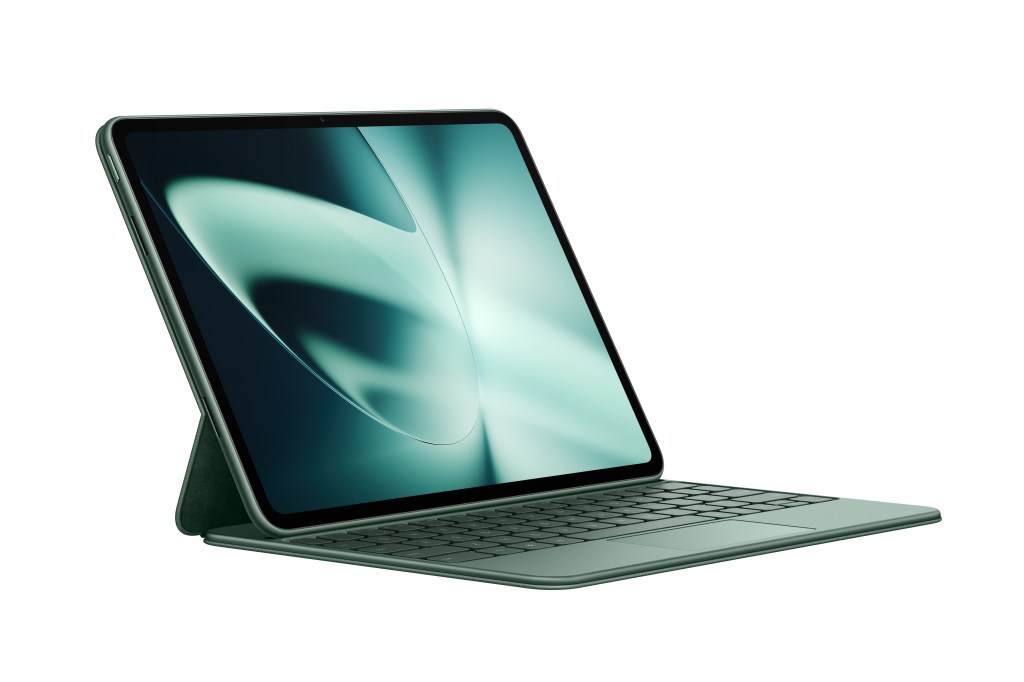
2. OnePlus Pad
Stuff Verdict
This is classy stuff – a premium tablet at a mid-range price from OnePlus
Pros
- Looks great premium feel
- Lush-looking display
Cons
- Slightly odd aspect ratio
- Only one spec available
| OnePlus Pad specs | |
|---|---|
| Screen | 11.6in 2800×2000 |
| Storage | 128GB |
| Camera | 8MP front, 13MP back |
| Connectivity | USB-C, Wi-Fi 6, Bluetooth 5.3 |
| Dimensions | 258x189x6.5mm, 552g |
Tablets are almost all shiny metal/glass widescreen rectangles, but this 11.6in model stands out (slightly) for its unusual 7:5 screen ratio. According to OnePlus, this allows it to display almost the same area as a full 12in tab while, thanks also to the slim bezels and 6.5mm body, being a comfy slate to hold.
It’s also beefily specced by mid-range standards, packing 8GB of RAM, an octa-core CPU, a 144Hz refresh rate for the Dolby Vision screen and four speakers compatible with Dolby Atmos. OnePlus claims a month of standby power and an impressive 12hrs+ of 1080p video playback on a charge. My own test – leaving a Full HD YouTube video running on full brightness, with Wi-Fi on – backed this up.
Is it any good?
The Pad is a looker, sporting an eye-catching deep green brushed aluminium body, more noticeably rounded corners than most tablets and a near-seamless transition from body to screen. It feels lovely in the hand as well.
Things get even better when you turn it on. The screen’s curious ratio doesn’t detract from its performance: with a fast refresh rate, high resolution and rich HDR colour depth, it’s up there with the best. This is a lush-looking display, brilliant for streaming video and playing games – an area where its fast innards come to the fore.
Another big tick in the plus column is the quad-speaker array, which belts out dialogue and music with crispness, strong separation and big volume. OnePlus has clearly put time and effort into making this feel like a truly premium product.
- Related: OnePlus Pad review – clean slate
Best budget Samsung tablet
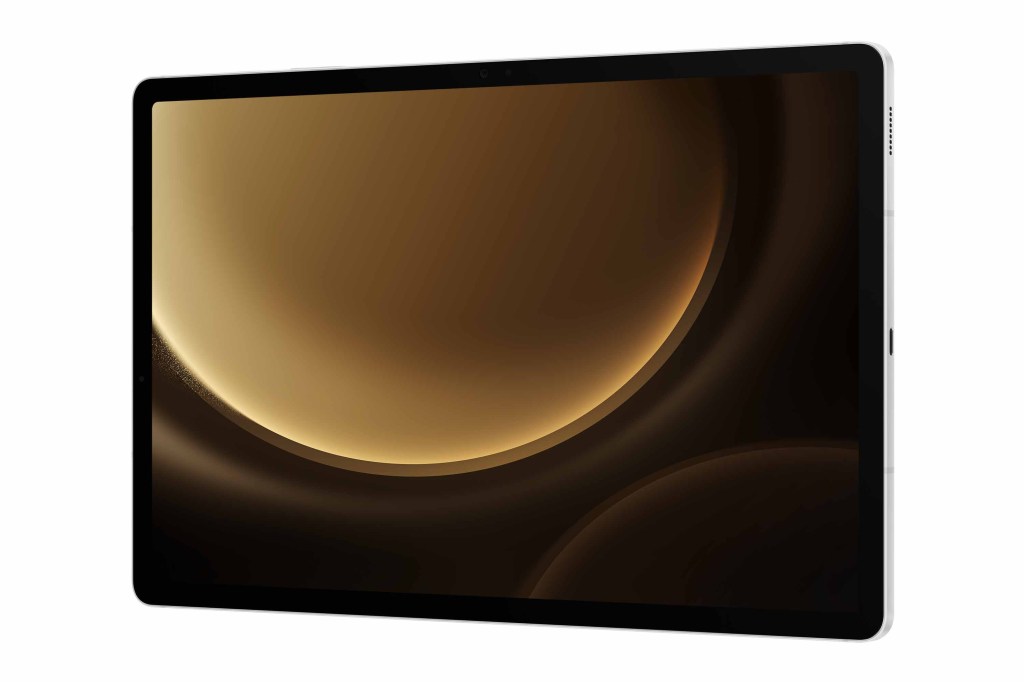
3. Samsung Galaxy Tab S9 FE
Stuff Verdict
A strong package, even if we prefer the performance of the OnePlus
Pros
- Solid metal frame and IP68 rating
- Includes stylus
Cons
- Rivals offer better performance
| Samsung Galaxy Tab S9 FE specs | |
|---|---|
| Screen | 10.9in 2304×1440 |
| Storage | 128/256GB + microSD |
| Camera | 12MP front, 8MP back |
| Connectivity | USB-C, Wi-Fi 6, Bluetooth 5.3 |
| Dimensions | 254x166x6.5mm, 523g |
Despite being one of Samsung’s more affordable Galaxy Tabs, the S9 FE offers an impressive spec and feature list. That’s good news, as its predecessor the S7 FE was a bit too expensive for what it actually offered – things are more appealing this time around.
There’s a 10.9in 2K screen with a 90Hz refresh rate, on which you can jot, scribble and create with the included S Pen smart stylus – tasks for which the bundled Samsung Notes and Goodnotes apps (the tablet comes with a one-year subscription to the latter) will surely come in handy.
There’s also a pretty decent combo of CPU and RAM, partnering Samsung’s own Exynos 1380 chipset with 8GB of memory. You get 128GB of expandable storage too, although more demanding users can pay extra for 12GB of RAM and 256GB of storage.
Is it any good?
Some onlookers thought I had an iPad. And, OK, the styling is rather similar to the 10th-gen Apple tablet. Go further than skin-deep, though, and there’s a lot happening here for the money.
The S9 FE is solid and sturdy thanks to a full-metal frame and IP68 certification, making it far more resistant to dust and water than any other model in this test’s lineup. If you’re prone to spilling coffee over your devices or you just use your tablet outside regularly, you might find that rather compelling.
Plus, there’s a stylus in the box. Given the way some others charge a premium for pointing sticks, that makes the S9 FE package a lot more appealing. It attaches to the tablet magnetically and is really good for writing – though, as always, how useful it is will depend on what you want to do on your tablet.
If there is any criticism, it’s that the Samsung’s screen is OK rather than stellar and the OnePlus Pad is simply a better performer. But this is a lovely all-rounder, and one of the best cheap tablets out there.
Best budget large tablet
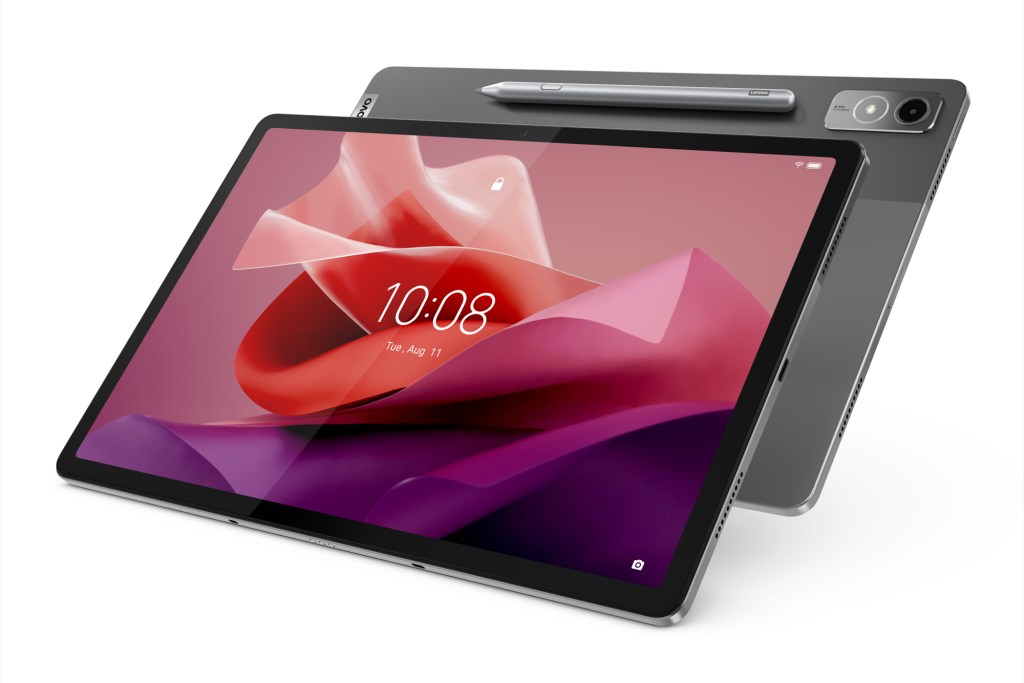
4. Lenovo Tab P12
Stuff Verdict
This larger model is solid and feels primed for PC-style productivity
Pros
- Excellent performance
- Speakers setup with Dolby Atmos support
Cons
- Uninspired styling
- Battery could be better
| Lenovo Tab P12 specs | |
|---|---|
| Screen | 12.7in 2944×1840 |
| Storage | 128GB + microSD |
| Camera | 13MP front, 8MP back |
| Connectivity | USB-C, Wi-Fi 6, Bluetooth 5.1 |
| Dimensions | 293x191x6.9mm, 630g |
Lenovo’s 12.7in tablet is a portable powerhouse built around Android 13, 8GB of RAM, 128GB of expandable storage (a 256GB version is also available) and an octa-core CPU – not to mention a pixel-packed ‘3K’ screen resolution and a quad-speaker audio setup.
My review sample also came with the Lenovo Tab Pen Plus stylus (£50 separately) and a keyboard case (around £130), both of which will help anyone lean into the productivity side of things, but even without them it’s a well-specced product for the price – and significantly larger than your standard 11in types.
Is it any good?
The CPU and RAM keep the Tab 12 ticking along beautifully smoothly, and I had no issues rapidly switching between apps and running fairly demanding 3D games like Asphalt 9 with supreme slickness. The screen is excellent too – not merely sharp but impactful thanks to its vivid colours and 400-nit brightness. It’s almost as punchy as the one on the OnePlus Pad… but not quite.
With four onboard speakers and Dolby Atmos support, the Tab 12 serves up a sonic feast (at least by tablet standards). Audio is surprisingly separated and ‘spatial’ considering it’s coming out of a slate; and if for some reason you’re going without headphones, these speakers do a better than average job for YouTube, Netflix and the rest. You could even rely on them for music playback at a pinch.
The front camera goes above and beyond too, with a 13MP sensor, ultrawide field of view, face detection and even a built-in beauty slider to transform your corrugated visage into a marble-smooth vision. It supports 1080p video, while the 8MP rear snapper has a flash, autofocus and a 4K recording option.
Complaints? Well, the styling of this tablet’s back side is very… Lenovo. It’s all a bit grey, uninspired, laptop-like and ‘officey’, but the build quality at least does feel sturdy and durable – and how often are you going to be looking at the back of the thing anyway?
Best budget tablet for battery life
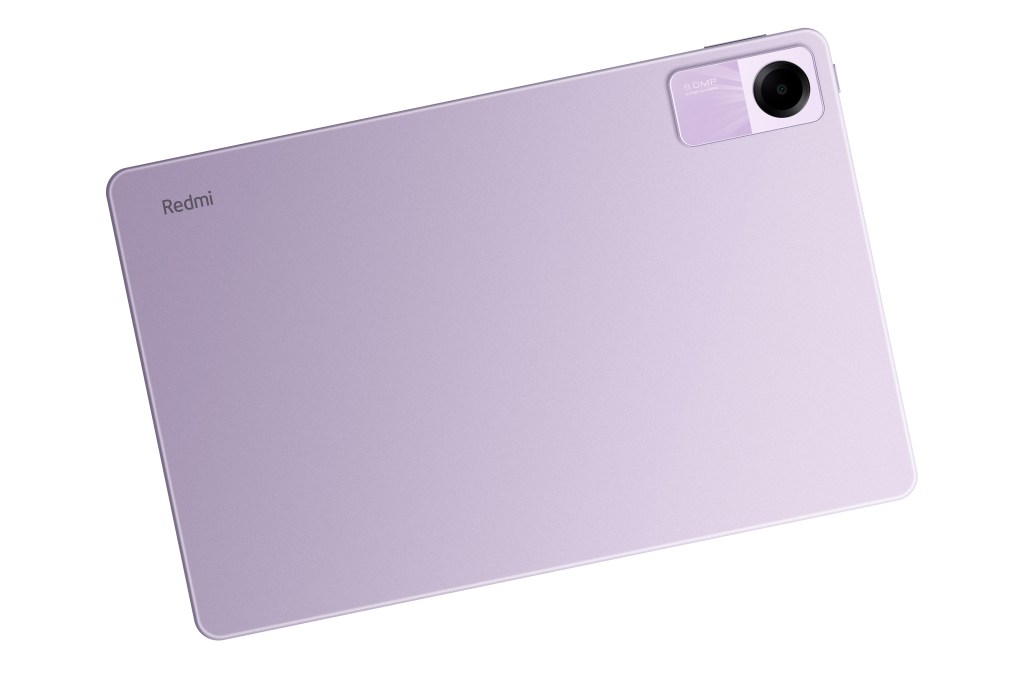
5. Redmi Pad SE
Stuff Verdict
A budget tablet that’s refreshingly low on compromise
Pros
- Eye-pleasing colours
- Outstanding battery life
Cons
- Camera lacks detail
- Battery slow to charge
| Redmi Pad SE specs | |
|---|---|
| Screen | 11in 1920 x 1200 |
| Storage | 128GB plus microSD |
| Cameras | 5MP front / 8MP back |
| Connectivity | USB-C 2.0, dual-band Wi-Fi, Bluetooth 5.0, 3.5mm headphone jack |
| Dimensions | 255.5 x 167.1 x 7.4mm ● Weight: 478g |
Manufactured by budget-centric Xiaomi offshoot Redmi, the Pad SE comes in at under £200 – not at all bad for an 11in model with a Full HD+ screen, octa-core Snapdragon 680 processor and a decent 128GB of built-in storage. Its body is fashioned from solid glass and aluminium, and there’s a quad-speaker array compatible with Dolby Atmos sound. On paper, it doesn’t sound particularly low-end.
Like most of the models here it runs on a lightly fiddled-with version of Android 13 (called MIUI Pad 14) although with only 4GB of RAM to call upon it doesn’t always tick along with the same silky zip as the 8GB models elsewhere (an 8GB version is available, although it appears to be a “global edition” that Xiaomi doesn’t sell direct in the UK).
Is it any good?
I’d expect a budget tablet to cut certain corners in order to keep costs down, and the Redmi Pad SE lags slightly behind pricier rivals in two areas: cameras and battery charging speed. Photos with the 8MP rear camera are noisy unless taken in very good lighting, while the front 5MP camera suffers from the same issue plus a general lack of detail. Still, I found both to be usable – and when I’m thinking about priorities on a tablet, camera performance is nowhere near top of my list.
The sluggish 10W charging speed could prove more of an annoyance, especially to people who are always on the go – but I also need to praise the Pad SE’s excellent battery life, which keeps it going for 40-plus days on standby and over 14 hours for 1080p video playback.
Other plus points include the generous (and expandable) storage space and the 11in 1900 x 1200 screen, which offers a 90Hz refresh rate and a pretty sharp pixel density of 207ppi. While not as hi-res or colour-rich as some of the more expensive alternatives here, it makes the Pad SE a fine slate for streaming video and gaming, especially when paired up with the respectably refined speaker array. And with the vast majority of cheap tablets being grey, silver or some combination of the two, the Pad SE’s addition of mint green and lavender options feel like a breath of fresh, colourful air.
Best budget tablet display

6. Honor Pad X9
Stuff Verdict
One or two niggles aside, an impressively slick cut-price slate
Pros
- Aluminium uniboys
- 120Hz display
Cons
- Build could feel better
- Software niggles
| Honor Pad X9 specs | |
|---|---|
| Screen | 11.5in 2000×1200 |
| Storage | 128GB |
| Camera | 5MP front, 5MP back |
| Connectivity | USB-C, Wi-Fi, Bluetooth 5.1 |
| Dimensions | 267x167x6.9mm, 499g |
An affordable tablet that’s got even cheaper since its launch less than a year ago, the Honor Pad X9 comes with a lot for an entry-level choice: a fairly sizeable 16:10 display with 2000×1200 resolution, 203ppi, 400 nits of brightness and a slick 120Hz refresh rate; no fewer than six speakers; and a Snapdragon 685 CPU with 4GB of RAM powering everything. It also comes with plenty of storage space, although the built-in 128GB isn’t expandable via microSD.
Honor has plonked its own MagicOS 7.1 user interface over Android 13, but you’re free to access the Google Play Store.
Is it any good?
My initial impressions of the Pad X9 were mixed. As a piece of hardware it feels better than budget-standard thanks to its aluminium unibody and glass screen (it’s a bit dull-looking, but you can’t have everything); but when you switch it on for the first time there’s a little too much pushiness concerning the value of an Honor account and using the company’s own apps and services.
Thankfully you can ignore all this. Skip through them and it’s much like any other Android 13 tablet, albeit with a slightly annoying extra step in the screen unlock process – forcing you to swipe up from the bottom and then down from the top to get back to what you were doing.
Even if the CPU and RAM couldn’t exactly be called a high-performance combination, the 120Hz screen makes general operation feel slick and smooth, and I didn’t have many issues playing quite demanding games such as Asphalt 9. The screen quality is solid too, making for a pleasant video-watching and web-browsing experience. Six speakers might be more than any other model in this test, but there’s not a huge amount of heft to their output and wireless headphones are still the way to go for music playback.
All in all, this is a great tablet for the price, even if it comes with a handful of minor weaknesses that mark it out as a budget option.
Best budget tablet for reading
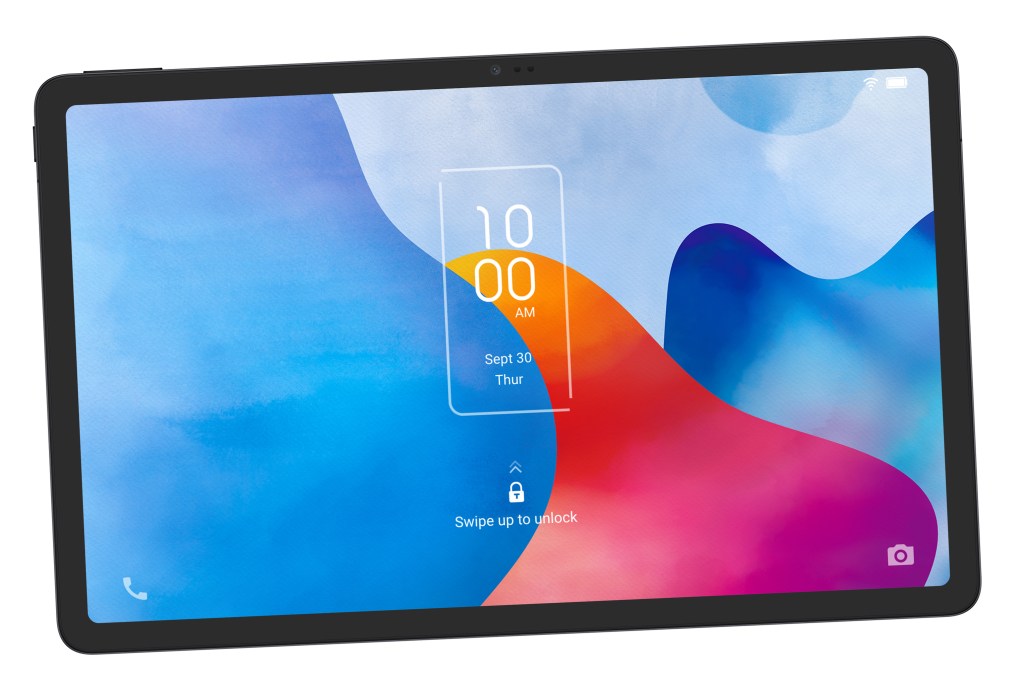
7. TCL Nxtpaper 11
Stuff Verdict
If you read a lot of e-books or want a colour tablet for sketching and note-taking, this might suit you better than shinier alternatives
Pros
- Matte display is interesting concept
- Decent battery life
Cons
- Screen looks muted
- Poor performance
| TCL Nxtpaper 11 specs | |
|---|---|
| Screen | 11in 2000 x 1200 |
| Storage | 128GB plus microSD |
| Cameras | 8MP front / 8MP back |
| Connectivity | USB-C 2.0, dual-band Wi-Fi, Bluetooth 5.0 |
| Dimensions | 257.0 x 161.6 x 6.9mm, 462g |
Yet another affordable Android 13-based tablet with a slim aluminium unibody and 11in screen, the TCL offers one major differentiator from its peers: a matte-finish “paper-like” display designed to be easier on the eyes.
Don’t get it confused with a genuine e-ink or e-paper screen – this is full colour, 60Hz and suitable for video watching and gaming. However, compared to a standard glossy screen its nano-chemical-coated surface makes it easier to see in bright environments, less likely to attract smears and fingerprints and more natural for sketching and writing with a stylus. At least, that’s what TCL says.
Is it any good?
In practice, the screen is far from the game-changer it claims to be. While I found it perfectly acceptable for video playback, web browsing and games and even better for reading Kindle books, there are downsides too: the coating acts like a filter making colours and details look a little muted and reducing visibility at tighter viewing angles. And no matter what TCL claims, greasy fingers will still leave smudges – so go easy on the crisps before prodding and swiping.
Elsewhere the Nxtpaper 11 doesn’t quite match the performance of the other budget 11in models here (the Honor and Redmi tablets). The screen refreshes at a slower 60Hz and the chip and RAM combo doesn’t impress as much in benchmarking tests. Battery life is respectable, though: left streaming a 1080p YouTube video at full brightness for three hours, it dropped about 18%, suggesting you should get about 15 hours of playback from a full charge. Sadly, the bundled charger tops out at just 5W, which results in frustratingly ponderous juice refills.
So while the Nxtpaper 11’s unusual screen means this tablet offers something a little different to its contemporaries, it’s not really enough of a boon to justify buying it over similarly priced but faster and brighter models. If you read a lot of e-books or want a colour tablet for sketching and note-taking, though, it might suit you better than shinier alternatives.
Best budget tablet for build quality
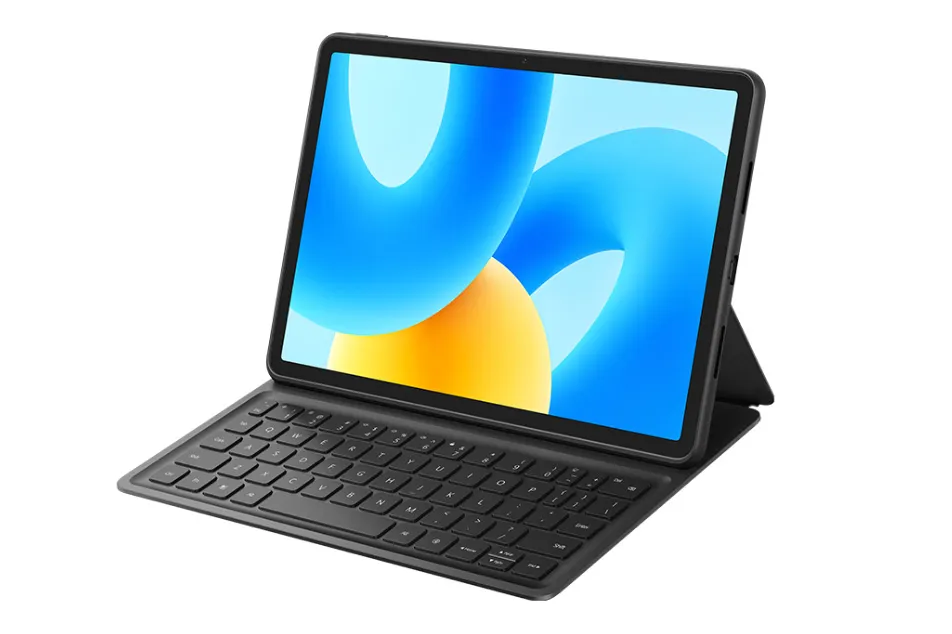
8. Huawei MatePad 11.5in PaperMatte Edition
Stuff Verdict
Great hardware, let down by Huawei’s lack of Google services and apps
Pros
- Matte screen is pretty good
- Solid build
Cons
- No Google Play access
- Performance patchy and unreliable with dodgy APKs
| Huawei MatePad 11.5in PaperMatte Edition specs | |
|---|---|
| Screen | 11.5in 2200 x 1440 |
| Storage | 256GB |
| Cameras | 8MP front / 13MP back |
| Connectivity | USB-C 2.0, dual-band Wi-Fi (inc. Wi-Fi 6), Bluetooth 5.2 |
| Dimensions | 260.9 x 176.8 x 6.85mm, 499g |
When it comes to hardware, Huawei’s mid-ranger certainly looks and sounds the part. This MatePad comes with a generous 256GB of internal storage space, an 11.5in 2K screen with a glare-busting ‘PaperMatte’ finish and a slick 120Hz refresh rate and a respectable Qualcomm Snapdragon 7 octa-core processor and 8GB of RAM, all tucked inside a handsome and slim aluminium unibody casing.
But there’s a familiar (and big, and scary) elephant in the room: due to Huawei’s ongoing black sheep status, this device has no access to Google services, including the Google Play app store. Apps can instead be downloaded from Huawei’s own AppGallery, but the limited selection feels skewed towards a Far Eastern audience rather than a Western one: there are TikTok, Telegram, Snapchat and AliExpress apps, but no Netflix or YouTube.
Is it any good?
Yes, there’s another tablet in this test with no Google Play access, but the Amazon Fire Max 11 doesn’t feel nearly as hamstrung, simply because Amazon’s app store is just so much better stocked than Huawei’s. (The Fire Max 11 is also £100 cheaper than the MatePad, giving the former’s own walled garden some leeway that Huawei’s doesn’t earn.)
There are certain workarounds. YouTube can be watched via the tablet’s web browser, and I did manage to get some apps (such as Prime Video) from outside the store running, but found performance to be patchy and unreliable: Reacher isn’t nearly as watchable when it judders and stutters every few seconds. There’s also the security risk associated with APK files, so I was left wondering if it was worth the bother.
This app issue is a shame for Huawei, because in all other aspects this is a very decent tablet with strong all-round performance in the other places that matter. The matte screen is a matter of preference, I suppose, but I personally found it more comfortable to view than a glossy alternative in many situations – and far less ‘fuzzy’ than the TCL’s similar screen.
Still, while Huawei’s Android devices lack access to Google services and apps, it’s difficult to recommend them over the alternatives.
Best budget small tablet
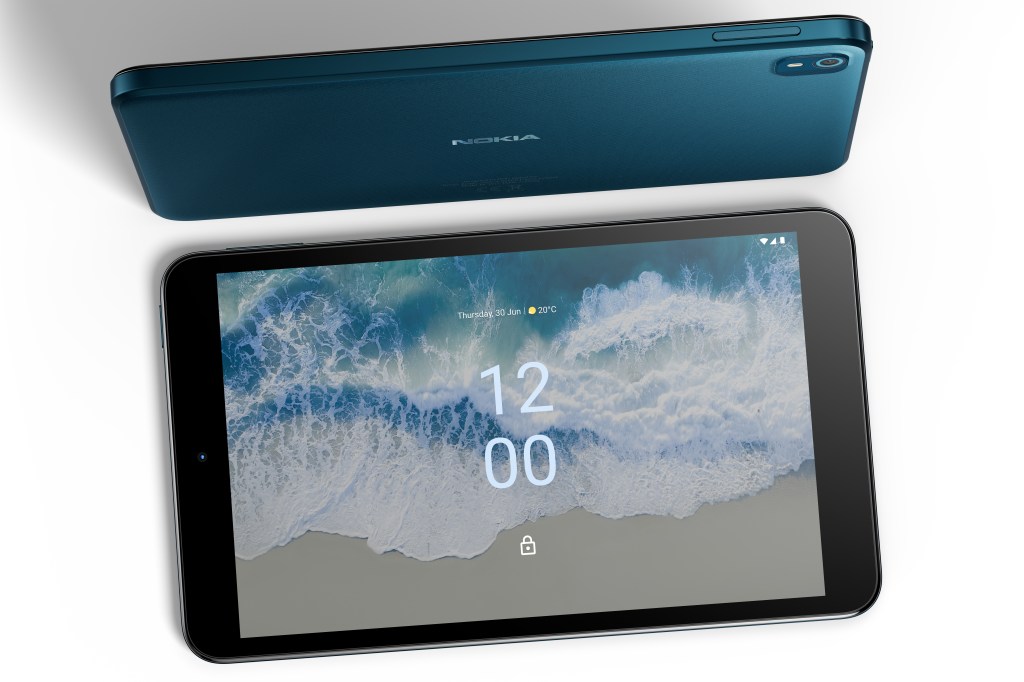
9. Nokia T10
Stuff Verdict
Small, low-powered and laggy, but this one’s temptingly affordable
Pros
- Water resistant
- Child-friendly cover available
Cons
- Lots of lag and very slow
- Unimpressive display
| Nokia T10 specs | |
|---|---|
| Screen | 8in 1280×800 |
| Storage | 32GB + microSD |
| Camera | 2MP front, 8MP back |
| Connectivity | USB-C, Wi-Fi, Bluetooth 5.0, 3.5mm audio |
| Dimensions | 208x123x9mm, 375g |
The smallest and most affordable model in this test by clear margins, the Nokia T10 seems to be designed for people who aren’t especially demanding. The body is made out of plastic rather than aluminium, the 8in screen has a sub-1080p resolution and the 32GB of onboard storage feels a bit stingy (although a microSD slot lets you instantly bump that up by a further 512GB should you need it).
All that being said, you get three years of guaranteed monthly security updates and two years of OS updates, plus front and back cameras (the latter with an
LED flash) and Nokia’s own spatial ‘OZO Playback’ audio smarts, so – on paper at least – this doesn’t seem like a slate that’ll be heading for the junk pile six months after you buy it.
Is it any good?
Unboxing and booting up the T10, it’s immediately apparent that it simply can’t go toe-to-toe with any of the other models here in terms of raw performance. It’s powered by a Unisoc T606 CPU and 3GB of RAM, and swiping through screens feels laggy to a point I never experienced with the other tablets here (aside from the Boox Tab X, but that has an E-Ink screen so can’t really be compared). It got genuinely irritating at times.
The 1280×800 60Hz screen isn’t a particularly powerful performer, lacking punch and vibrancy as well as detail, but it’s absolutely fine for streaming Netflix or Prime Video and web browsing – as long as you’re looking at it from dead ahead, as viewing angles aren’t a strong point. Sound from the built-in stereo speakers is a touch thin and flat, but I found it acceptable for an episode or two of Bosch. Headphones will serve you better here, of course, and I was happy to see a 3.5mm socket on the T10 for hooking up wired cans.
This tab is somewhat water-resistant (to IPX2 standard); but when fitted with the colourful child-friendly soft cover (a £30 option) it becomes nigh-on indestructible. And it’s here, as a cheap and compact tablet for kids, that the Nokia has some real appeal.
What to consider when buying a budget tablet
When shopping for the best cheap tablets, start by focusing on the essentials for general use – browsing, streaming, and casual gaming. Look for a reliable processor (like a MediaTek Helio or lower-end Qualcomm Snapdragon) paired with 3GB–4GB of RAM. These specs provide a smooth experience for everyday tasks without breaking the bank. A Full HD display or higher is ideal for media consumption, but even HD will do in this price range.
The operating system matters, too. Android tablets lead in affordability and customisation, with brands like Samsung, Lenovo, and Amazon offering solid models for less. Amazon Fire tablets, for instance, are budget-friendly options that integrate seamlessly with Amazon services and are perfect for media streaming and basic tasks. For kids, look out for specific child-friendly features and rugged models with extra durability.
For display quality, choose screens in the 8 to 10-inch range with decent brightness and colour accuracy, making them easy on the eyes for long viewing sessions. Battery life is key as well; the best budget tablets should last around 8 hours to get you through most of the day. Finally, if you plan to use the tablet for light productivity, check for stylus support, keyboard compatibility, and storage expansion options, which add versatility without much added cost.
How we test budget tablets
We have used and reviewed every tablet on this list, so you can trust us when it comes to recommending the best tablet to buy.
Our extensive hands-on experience with countless devices ensures that we provide reliable and well-informed recommendations. Each tablet has been thoroughly tested to ensure it meets the high standards we set for performance, usability, and overall value.
We usually spend a week or longer reviewing tablets, immersing ourselves in their daily use to thoroughly evaluate all of the software features, build quality, and performance. This extended period allows us to experience the tablet as an average user would, identifying both strengths and weaknesses that may not be immediately apparent. Our testing process is designed to uncover how well the tablet performs under various conditions, ensuring our reviews are not just surface-level observations but deep, meaningful analyses.
Our reviews are very comprehensive, covering every single aspect of a tablet, including battery life, quality of the display, and overall performance. We rigorously test battery longevity under different usage scenarios to provide an accurate picture of real-world endurance. The display is evaluated for brightness, colour accuracy, and resolution to determine its quality. Performance testing includes running various applications and multitasking to assess the tablet’s capability to handle daily tasks efficiently. Basically, we aim to give you a complete understanding of each tablet’s capabilities, helping you make an informed purchasing decision.
Find out more about how we test and rate products.


